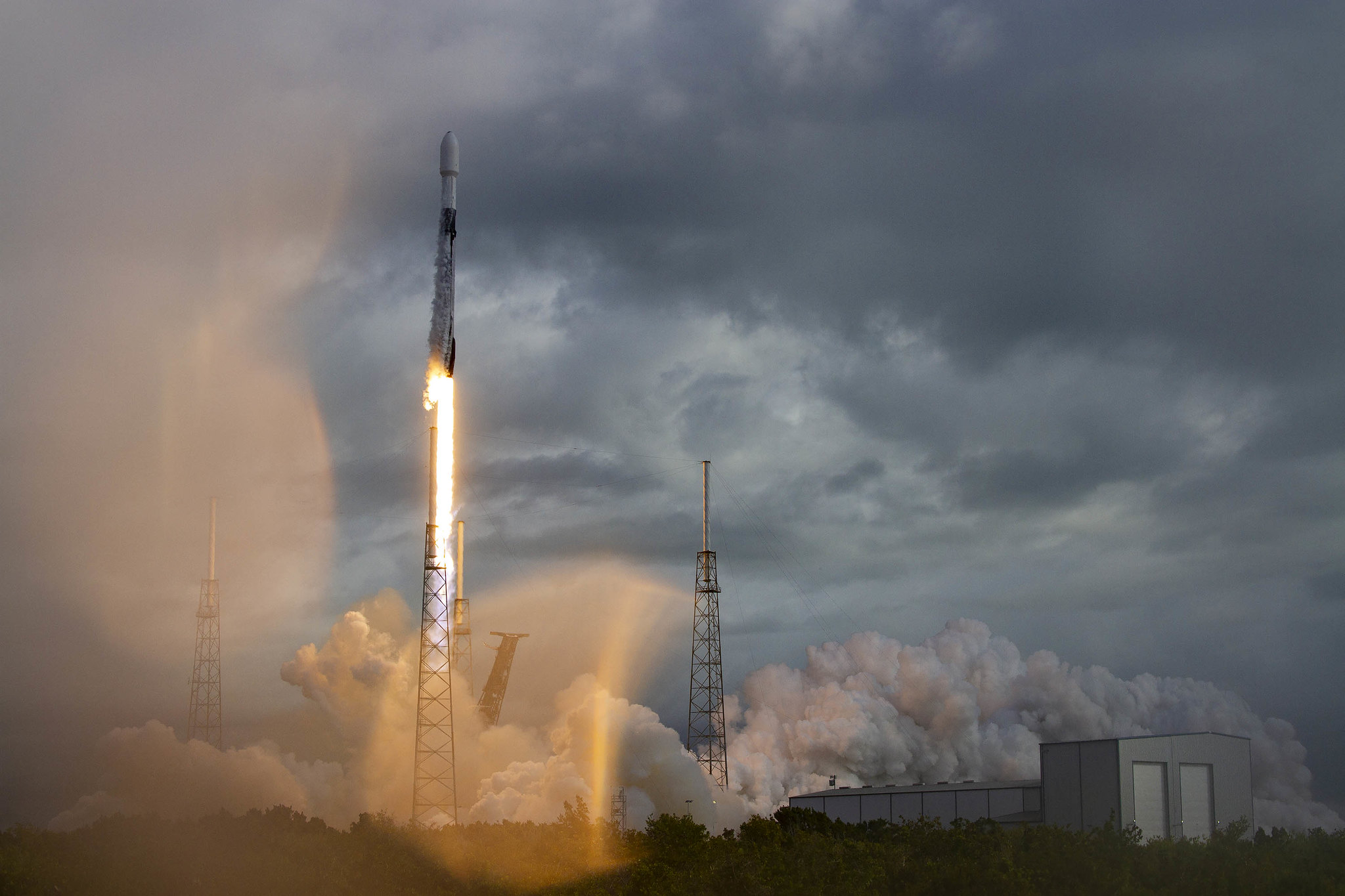SDA’s experiments were done in collaboration with the Defense Advanced Research Projects Agency and the Air Force Research Laboratory
WASHINGTON — The U.S. Space Development Agency has five satellites riding on SpaceX’s Transporter-2 rideshare mission scheduled to launch June 25.
“There’s nothing in the space business that gets your blood pumping like the idea of a launch, especially if you’ve got multiple satellites,” a senior Space Development Agency (SDA) official told reporters June 22. “We’re really excited about what’s going to happen.”
Transporter-2 is expected to carry as many as 88 small satellites from commercial and government customers to a sun synchronous polar orbit. SDA’s five payloads include two pairs of satellites to demonstrate laser communications links, and one to demonstrate how data can be processed and analyzed autonomously aboard a satellite.
SDA’s experiments were done in collaboration with the Defense Advanced Research Projects Agency and the Air Force Research Laboratory.
These are SDA’s first in-space experiments since the agency was established in 2019. SDA is developing a network of satellites in low Earth orbit for military communications and for missile defense. The first batch of satellites is scheduled to launch in late 2022.
Laser comms demonstration
SDA is launching a demonstration known as Mandrake 2 — a pair of small spacecraft equipped with optical crosslinks that was originally scheduled to launch in January on SpaceX’s Transporter-1. The satellites were accidentally damaged during payload processing and didn’t make the launch.
The satellites were made by Astro Digital with optical links from SA Photonics. Mandrake 2 started under DARPA’s Blackjack, a program that began in 2018 to demonstrate the utility of low-cost small satellites in low Earth orbit for military operations.
Also on Transporter-2 are a pair of cubesats built by General Atomics for SDA. They will be used to demonstrate optical communications between satellites, and from satellites to a military drone aircraft.
SDA will test optical crosslinks and communication between satellites and a pilotless MQ-9 Reaper drone made by General Atomics Aeronautical Systems.
Onboard data processing
SDA’s fifth payload is riding on a commercial satellite built by Loft Orbital called YAM-3, short for “Yet Another Mission.”
Loft Orbital, a San Francisco-based startup, buys satellite buses and leases space onboard the buses to customers who don’t want to fly their own satellites. The company’s customer for the SDA payload is Scientific Systems Company Inc., which won a DARPA contract to fly a demonstration for the Blackjack program’s Pit Boss mission system. SDA recently took over the experiment and named it POET, short for prototype on orbit experimental testbed.
The goal is to demonstrate data processing onboard a satellite in space and the ability of the satellite’s computer to analyze data from multiple sources, analyze it and send it down to users on the ground.
The SDA official described POET as an “offshoot of the Blackjack Pit Boss effort.” He said the experiment will seek to “load data and algorithms, and we’re going to test out data fusion in orbit.”
Military users need data fast, he said, “so we have to move more and more of the processing into orbit to actually accomplish that.”
